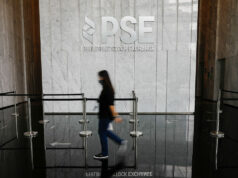Peso plunges ahead of BSP move
THE PESO plunged against the dollar anew on Tuesday as market players continue to wait for a possible rate or reserve ratio cut by the local central bank during its policy meeting tomorrow.
The local unit ended yesterday’s session at P52.83 versus the greenback, 18 centavos weaker from the P52.65-per-dollar finish on Monday.
This was the peso’s weakest showing in nearly two months or since it closed at P52.86 per dollar on Jan. 24.
The peso traded weaker the whole day, opening the session at its best showing of the day of P52.66 versus the greenback. Meanwhile, it slipped to as low as P52.84 intraday.
Dollars traded surged to $1.141 billion from the $846.4 million that switched hands the previous day.
Foreign exchange traders said the peso weakened versus the greenback as the market priced in possible monetary easing from the Bangko Sentral ng Pilipinas (BSP).
“The peso traded higher despite the lackluster move of the dollar overnight as the market expects some kind of monetary easing from the BSP, whether a cut in policy rates or reserve requirements,” the trader said in a phone interview.
A BusinessWorld poll showed that 10 out of 13 economists believe the central bank may still have some room to keep its borrowing costs steady even as inflation is in a downward trend.
Inflation eased for the fourth straight month in February to 3.8%, the slowest in 12 months, driven by slower increase of food and non-alcoholic beverage costs. However, this is still near the ceiling of the BSP’s 2-4% target this year.
Meanwhile, some economists said the BSP may trim the reserve requirement ratio of banks by a percentage point to 17% from the current 18%, which is deemed as the highest among regional peers.
“The peso broke resistance levels, that’s why we saw aggressive selling of the dollar peso,” the trader added.
For today, the trader expects the peso to move between P52.85 and P53 versus the dollar, while another trader gave a P52.70-P53 range.
“The peso might depreciate further due to dollar safe-haven demand driven by market uncertainty concerning the impact of both the BSP and the [US] Fed[eral Reserve]’s policy cues to the local currency,” the second trader noted. — K.A.N. Vidal



